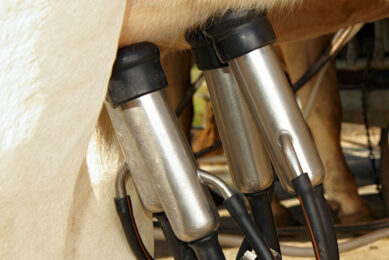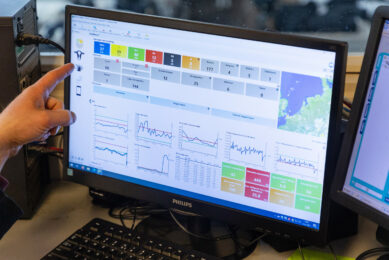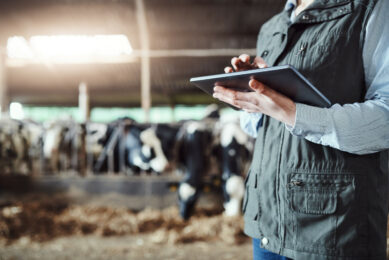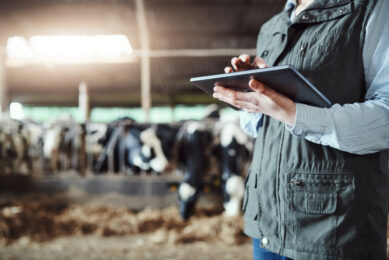Innovative technologies to ensure welfare
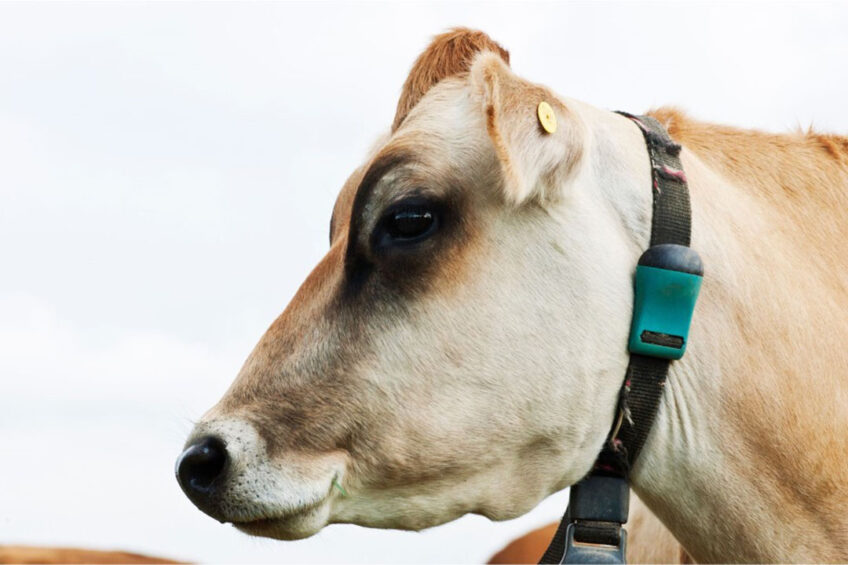
Farmers need reliable and affordable technologies to assist them in daily management tasks and to guarantee accurate and continuous individual animal monitoring and increase the farmer’s ability to keep contact with individual animals to prevent health, welfare and management issues.
The increasing world population has led to a rapid intensification in dairy production systems. This has affected animal health and welfare, although in recent years consumers have become more concerned about the welfare, health and living conditions of farm animals.
We are living in the 4th technological and industrial revolution era (i.e., technology 4.0) which is about using cyber-physical systems, wireless communication and technology.
Technological advancements are used to control the integration of communication systems, increase production efficiency, lower operational costs and provide reliable and accurate tools for monitoring dairy cattle health and welfare.
Welfare assessment
The first step towards improving dairy cattle welfare is accurate and frequent assessment using a reliable tool such as the Welfare Quality protocol. In addition, there are several proposed approaches for the scientific assessment of dairy cattle welfare, such as the feelings-based approach, natural living, and the five freedoms, with each tending to emphasise different measurements.
However, in modern dairy cattle production systems, farmers need reliable and affordable technologies to assist them in daily management tasks and to guarantee accurate and continuous individual animal monitoring and increase the farmer’s ability to keep contact with individual animals to prevent health, welfare and management issues.
Upcoming technologies
There is growing interest in detecting animal behaviour and body postures through the application of technology that enables remote communication, welfare assessment and behavioural pattern recognition. Appropriate choice of technology with the correct application to measure animal welfare is critical in the successful automation of animal health and welfare monitoring.
Emerging technologies with potential in the dairy industry include near-infrared spectroscopy, machine vision, 5G technology, cloud computing, biosensors, augmented reality, artificial intelligence, and the Internet of Things.
Near-infrared spectroscopy
Near-infrared spectroscopy is a multi-analytical technology that applies the infrared region of the electromagnetic spectrum (from 800 nm to 2,500 nm) to explore the physio-chemical characteristics of samples. Near-infrared spectroscopy is a rapid, non-destructive, precise and cost-effective technology for feed analysis. This technology can be applied on-farm for precision feeding systems to provide the right amount of daily nutrients with fewer metabolic alterations.
Near-infrared spectroscopy portable tools can be used directly in the barn in “on-line” and “on-live” mode to obtain information in real time and to avoid the long waiting times for laboratory analysis responses, allowing timely prevention and correction.
Machine vision
Machine vision uses machines, sensors and data-processing algorithms to “see”, analyse and make decisions about the surroundings. Machine vision will have a massive impact on many fields, including agriculture and animal science. It is especially useful for problems that currently need a person to view the situation, such as dairy cow feed intake monitoring and observing the gradual change in body condition score.
Systems based on machine vision are suitable for the dairy environment, as they do not inhibit workflow, are capable of continuous operation and can be fully automated.
5G technology
5G technology is one of the major futuristic visions in communication and data transformation due to its capability of supporting 1,000-fold gains in capacity, connections for at least 100 billion devices and a 10–20 GB/s individual user experience of extremely low latency and response times. Deployment of 5G networks is expected to emerge between 2020 and 2030.
In intensive dairy production systems, dairy cows can wear a 5G-connected collar that controls the robotic milking system.
Cloud computing
Cloud computing links cyber-physical systems intelligently and in real-time, allowing data sharing across connected devices to the same cloud within milliseconds or faster. In addition, cloud computing enables the delivery of computing services such as servers, storage, databases, networking, software and analytics through visualised and scalable resources over the internet.
Cloud computing offers a great opportunity to monitor dairy cattle health and behaviour and to enhance dairy farm efficiency, productivity and profitability.
Biosensors
Wearable wireless biosensors comprise battery, data transmitter and one or more sensors mounted on the cow’s body to measure, collect and transmit biometric data at specified time intervals. The collected data are computed into physiological and behavioural parameters by algorithms, software or cloud computing to predict, detect and diagnose the physiological and health status of dairy cattle. These sensors include ear tags, halters, neck collars, reticulo-rumen bolus sensors, leg tags, tail tags, tail head tags and vaginal tags.
Augmented reality
Augmented reality is associated with technologies that combine physical and virtual objects over the real environment, interact in real time and align physical and virtual objects with each other. The overlaying of different virtual elements generated by a computer over the real world can give information about the physical elements that human senses could not provide. Augmented reality provides useful information about individual cow identification, health status, productivity, feed ration, heat signals and behaviour.
Artificial intelligence
Artificial intelligence is described as the simulation of human intelligence in machines that are programmed to have traits associated with the human mind, such as learning and problem-solving. It aims to understand and design systems displaying intelligence properties such as the ability to learn, derive knowledge from data, rationalise and take actions to achieve specific goals.
Big data combined with artificial intelligence algorithms can be transformed into useful information to improve decision-making on dairy cattle farms.
Internet of Things (IoT)
The Internet of Things is a new paradigm that connects devices through high-speed internet to sense, gather and share data so that it can be processed and utilised to fulfil common goals. For example, IoT-embedded smart collar belts can be used in dairy cattle management systems to give real-time location of the cattle and send signals to the owners every 15 minutes. In addition, the IoT can be applied to auto-milking, heat-cycle tracking, health tracking, decreasing mortality with security alerts and controlling disease outbreak.
Conclusion
Advancement in technology increases the farmer’s ability to keep contact with individual animals even in the growing intensification of livestock production, enhances production efficiency, decreases operational costs and provides reliable and accurate data for management and planning purposes.
Despite possible existing limitations in terms of technology and infrastructure, the dairy industry needs to be trained to adopt the new technological revolution. In addition, the engineering community needs to know the demand in dairy farming for the potential opportunity to advance the devices and tools for more efficient applications in the field.



